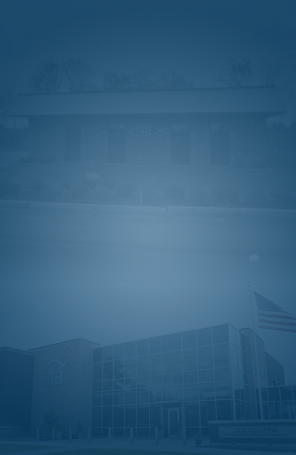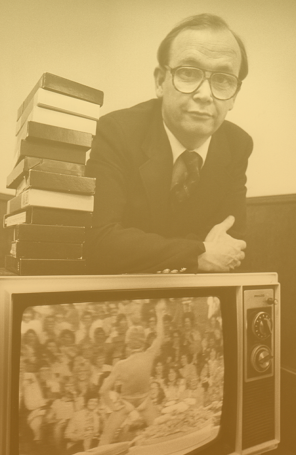Jesus Said What?
Sign up for a six month free
trial of The Stand Magazine!
“Why don’t Christians keep their antiquated views and opinions in their churches and to themselves? They should let people live out their lives the way they want. They’re just interfering bigoted hate mongers!”
Those and other charges have been bandied about by political and religious progressives so much that some rather large segments of the church have succumbed to the endless badgering. Most keep quiet outside the church and many have even joined the progressives. Why and how has this happened?
The sexual revolution of the sixties and seventies coupled with the rebellion against authority spread into colleges and universities giving it much-needed legitimacy. It trickled into our churches where it was initially rebuffed but over time has finally established a stronghold. Biblical accuracy slowly but surely began to take a back seat to cultural accommodation. Ripped from their proper context passages like John 3:16 and 1 John 4:16 seemed a nice fit as a ‘love at all costs’ message.
However, reading the Gospels as they were written and intended to be understood, will not allow one to embrace a go-along-to-get-along feel-good privatized version of Christianity. Take, for instance, the gospel of Matthew.
Matthew was written very close in time to the Roman siege of Jerusalem and the destruction of the temple (which was, of course, the focal point of Jewish faith and religion and continued to be important to the first followers of Christ). That event was going to be felt by the Jews for millennia. To this day, there is no Jewish temple in Israel.
What kind of language do you use if you know that a tragically seminal event is very near? Words not only communicate ideas, but they also paint mental images.
Matthew has Jesus saying things (consistently) that if put on film would warrant an R rating for graphic violence. And if the average churchgoer has heard them, they are quickly dismissed from thought because they don’t fit the narrative that Jesus was nice and vigilantly mindful of the sensitivities of others.
For instance, in the Sermon on the Mount (of all places) Matthew relates that when Jesus got to the subject of adultery He suddenly said,
If your right eye causes you to sin, tear it out and throw it away…and if your right hand causes you to sin, cut it off and throw it away…(Matthew 5:29-30).
Words intentionally convey images and neither of those is a pretty one. Like I said, R rated if you put it on film.
Interestingly, Matthew says Jesus reiterated virtually the same thing again in chapter 18 verses 8-9. Again, it is the Lord’s advice for those who feel they may yield to the temptation to sin. Cut off your hand or foot rather than yield and tear out your eye if you can’t stop looking where you shouldn’t. He may be speaking metaphorically but still, the mental images are gruesome.
Oh, but it doesn’t end there. In Matthew 21:44 Jesus speaks of those who fall on the cornerstone as being crushed and broken in pieces. Like that image? There are others. In the parable of the wedding feast, He said the man who was at the wedding but not dressed in the appropriate clothing would be tied up and thrown into “outer darkness” (Matthew 22:13). The implication is that being bound and thrown in the darkness will be a permanent situation. Have you ever read Poe’s The Pit and the Pendulum or seen a movie with a buried alive scene? Very uncomfortable. In Matthew 23:27 He said the scribes and Pharisees were like tombs filled with dead people’s bones “and all uncleanness.” Death, graves, decay, worms, etc.
In the middle of the discourse concerning the end times, Jesus likened the cultural and spiritual climate to vultures feeding on a corpse (Matthew 24:28). We’ve all seen that ugly scene driving down a country road with roadkill in the middle of the lane. Nasty.
Again, in the same discourse, He likens those who fail to prepare themselves for His coming to drunkards who will be cut into pieces and put with the hypocrites where “there will be weeping and gnashing of teeth” (Matthew 24:45-51). “Cut into pieces”? Really? Why was it necessary to put that image in my mind?
Finally, at the Last Supper, Matthew reports that Jesus lifted up bread and wine and said, “Take, eat, this is my body” and “drink of it, all of you, for this is my blood of the covenant, which is poured out…” (Matthew 26:26-28).
Words paint pictures and many of the words that Jesus Christ spoke painted pictures that are far removed from flowers, beaches, or castles in the sky. Rather, there were images of dismemberment, open graves, being crushed, cut into pieces, solitary confinement, and even cannibalism.
If you are shocked at this I hope you grab your Bible and turn to the gospel of Matthew. I used the English Standard Version but you will be hard-pressed to find any version that cleans up all those terrible images created by the words of Christ.
Why such terrible imagery by the Prince of Peace? Remember, Matthew is writing very near to the worst catastrophe to fall on Israel in all its storied history. They had recovered from four centuries of slavery in Egypt. They survived the divided kingdom. They even rebounded from the Babylonian Captivity. But to this day, Israel has yet to fully recover from the havoc that Rome wrought in 70 A.D.
My point is that Matthew’s Jesus used the kind of imagery to match what was at stake. What led to the disaster of the razing of the temple was the kind of religious belief and practice advocated by the religious leaders of Israel embodied by the Scribes and Pharisees. When Jesus tried to speak in a more palatable and acceptable language the message shot straight over the heads of the audience (Nicodemus: “How can a man be born when he is old? Can he enter a second time into his mother’s womb…?” and “How can these things be?” John 3:4; 9).
John’s gospel focuses on belief but Matthew presents the ministry of crisis. The horror of 70 A.D. required a language that called for horrific imagery because of the implications.
So, back we go to the opening accusations against today’s faithful Christian. “Why can’t you just let people live their lives the way they want?”
Because of what is at stake.
Read Matthew 23:15 for some enlightenment. People have been sold a bill of goods that just isn’t true. They have been deceived by forces that want to manipulate their decisions and control their destinies just like the Scribes and Pharisees of old. They talk “freedom” when the reality is “bondage” and the consequence is destruction. Faithful Christians aren’t willing to sit back and enjoy the show (like Jonah wanted to do) as those who have been blinded head straight for the ditch from which there is no recovery.
I’m sure Jesus would have preferred to use language and imagery that painted a Disneyesque picture of the world. But He wasn’t facing Walt Disney’s world. He was facing more of a Quentin Tarantino world. A world of hypocrisy where there is supposedly no eternal consequence for self-gratification and self-indulgence. To that world, Jesus brought terrifying and graphic images of what the consequences of continued disobedience to God would be.
That is still the world we live in. And the signs of massive upheaval are everywhere. Do followers of Christ just sit back and enjoy the show? I think not.

Sign up for a free six-month trial of
The Stand Magazine!
Sign up for free to receive notable blogs delivered to your email weekly.



















